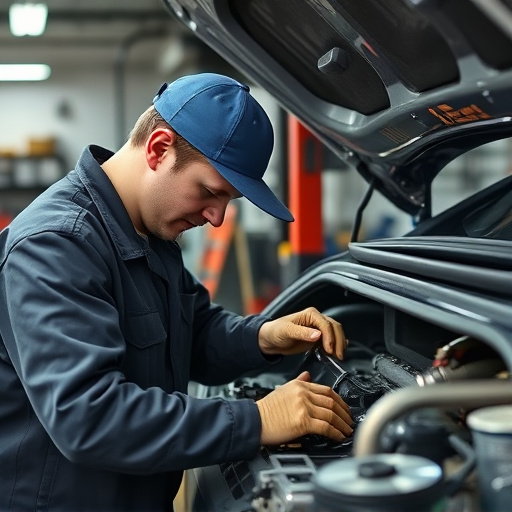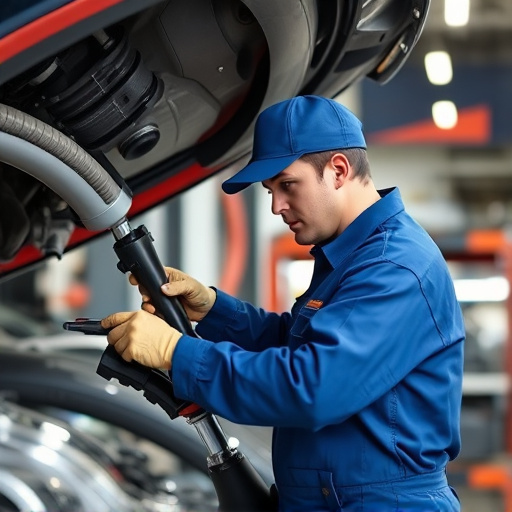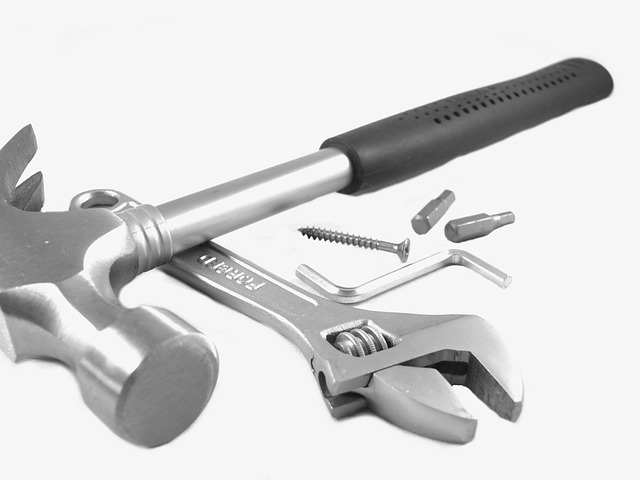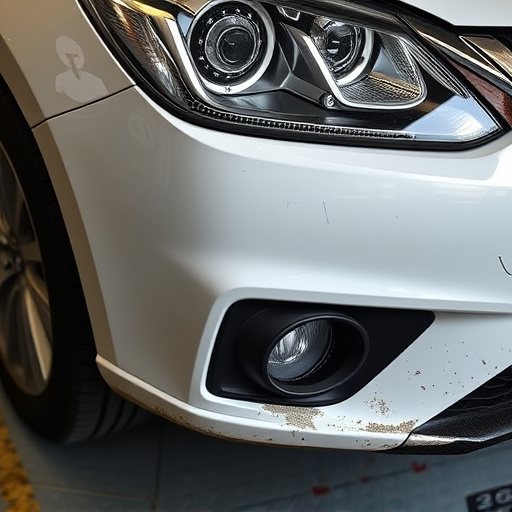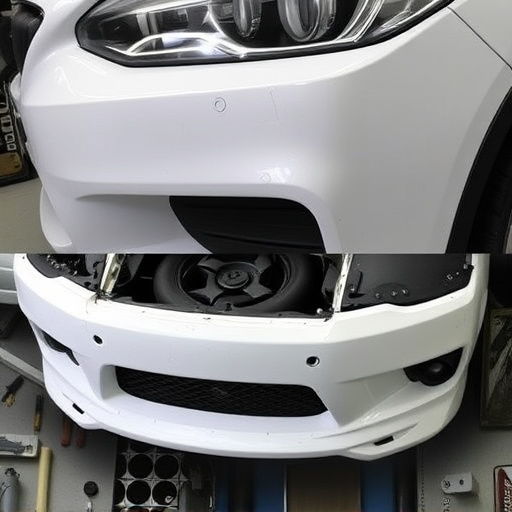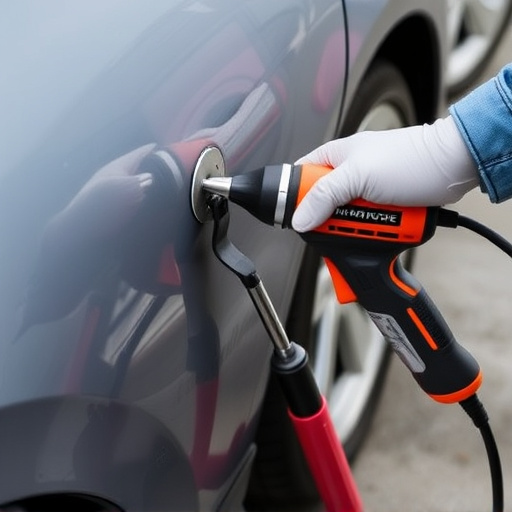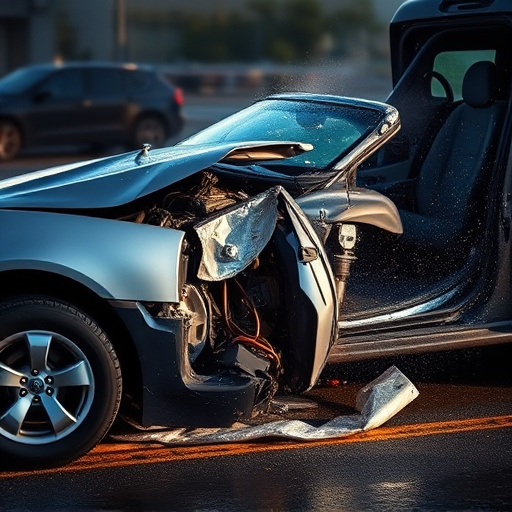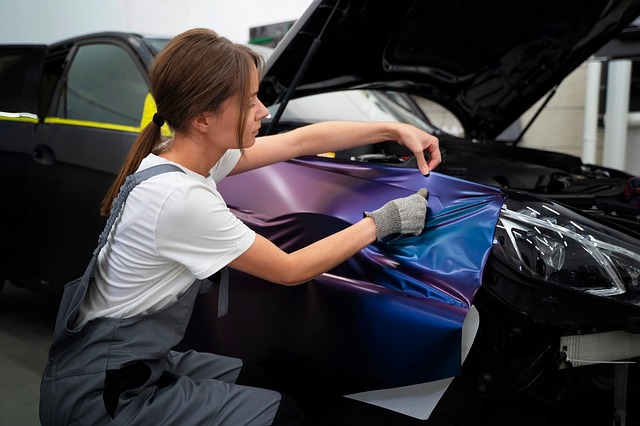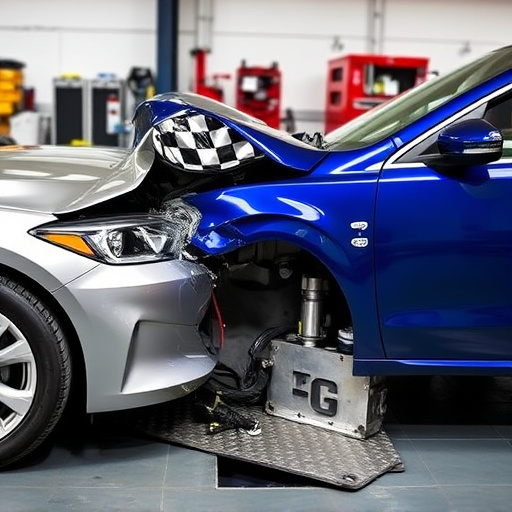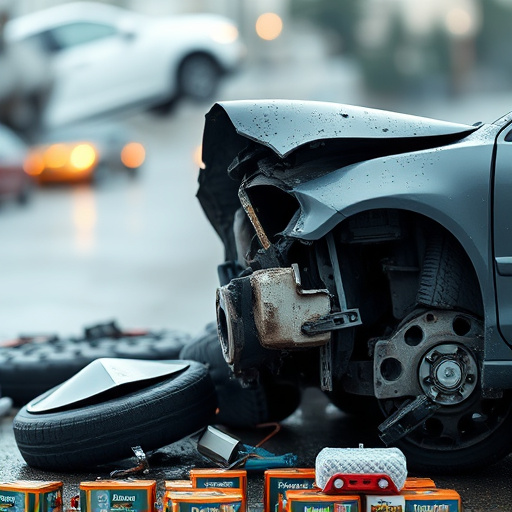Tesla collision repair involves meticulous cosmetic and structural restoration, focusing on high-voltage (HV) system safety and functionality checks. Severe damage may require disassembly to access hidden parts. The process aims to maintain vehicle integrity, with advanced tools assessing HV systems for range and efficiency preservation. Optimizing Tesla collision repair time frames through detailed assessments, diagnostics, and modern tools ensures swift restoration while meeting safety standards.
When it comes to Tesla collision repair, understanding the process and optimal time frames is crucial. This comprehensive guide delves into the intricacies of Tesla’s unique repair methods, with a special focus on high-voltage system checks—an essential component of their electric vehicles’ safety. Learn about best practices to optimize repair time, ensuring your Tesla is safely restored to its pre-accident condition. From initial assessment to final inspection, discover the key steps in achieving an efficient and reliable Tesla collision repair.
- Understanding Tesla Collision Repair Process
- High Voltage System Checks: A Comprehensive Guide
- Optimizing Repair Time: Best Practices Revealed
Understanding Tesla Collision Repair Process
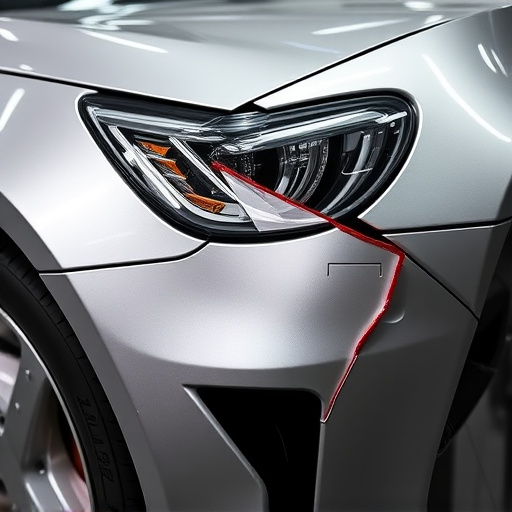
When a Tesla vehicle experiences a collision, understanding the intricate process of its repair is essential for owners. Unlike conventional cars, Teslas require specialized attention due to their advanced electrical systems, particularly the high-voltage battery packs. The first step in Tesla collision repair involves a thorough inspection to assess the extent of damage, not just to the exterior but also to the internal components, especially the high-voltage (HV) system. This meticulous process ensures that every part is safely and accurately evaluated for replacement or repair.
The automotive restoration process for Teslas considers both cosmetic and structural integrity. Skilled technicians employ advanced techniques to fix car scratch repairs and address any damage to the body panels while ensuring proper alignment. For more significant incidents, a complete disassembly might be necessary to access and repair hidden components. Throughout the entire process, the HV system checks are crucial, as they verify the safety and functionality of the vehicle’s electric motor and battery, ensuring the car can be driven safely after restoration, just like undergoing an automotive collision repair.
High Voltage System Checks: A Comprehensive Guide
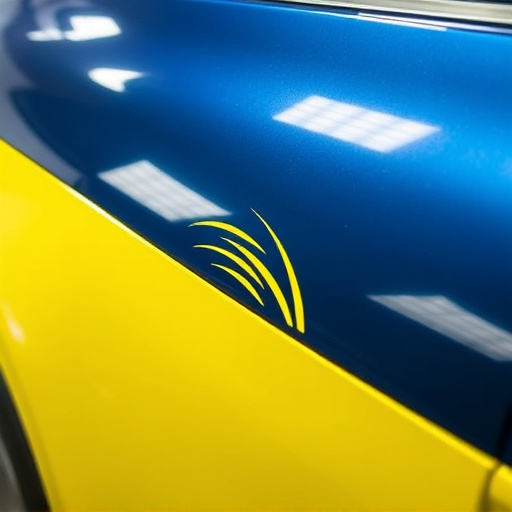
High Voltage System Checks are an integral part of any Tesla collision repair process, as electric vehicles (EVs) have unique safety considerations. When a Tesla experiences damage that requires auto body repairs, the high-voltage system must be thoroughly inspected and evaluated to ensure it remains safe and functional. This comprehensive guide outlines the critical steps involved in these checks.
The process involves a detailed assessment of the vehicle’s battery pack, power electronics, and associated components. Skilled technicians utilize specialized tools and diagnostic software to monitor voltage levels, current flow, and overall system performance. Any anomalies or potential issues are identified and addressed promptly, as they could impact the vehicle’s range, efficiency, and most importantly, safety. Regular high-voltage system checks during auto maintenance routines also help in early detection of problems, preventing more complex and time-consuming (and costly) Tesla collision repairs in the future.
Optimizing Repair Time: Best Practices Revealed
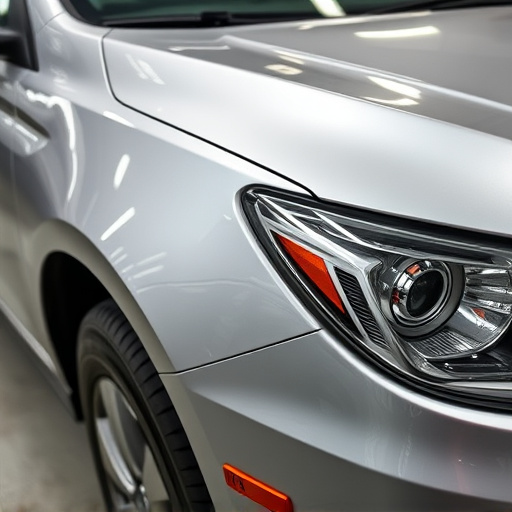
Optimizing repair time is a key aspect of Tesla collision repair, ensuring vehicles return to their owners as quickly as possible. Best practices involve a meticulous process that starts with a thorough assessment of the damage. Skilled technicians use advanced diagnostics to accurately identify issues, especially with high-voltage systems, which are critical in Tesla models. This initial step sets the stage for efficient repairs, avoiding unnecessary delays.
Effective communication between the body shop and the customer is vital. Keeping owners informed about the progress, including any potential challenges or delays, builds trust. Utilizing modern tools and techniques for vehicle paint repair and automotive repair in general, such as automated painting systems and precision tooling, significantly streamlines the process. These methods ensure consistent quality while minimizing labor hours, contributing to a faster turnaround time without compromising safety or standards.
In conclusion, understanding the Tesla collision repair process, particularly the intricacies of high voltage system checks, is key to optimizing repair time frames. By adhering to best practices and comprehensive guidelines, repair shops can ensure efficient, safe, and high-quality repairs for Tesla vehicles. This not only benefits consumers by minimizing downtime but also contributes to the overall sustainability and safety of electric vehicle ownership. Remember that when it comes to Tesla collision repair time frame, knowledge is power.


